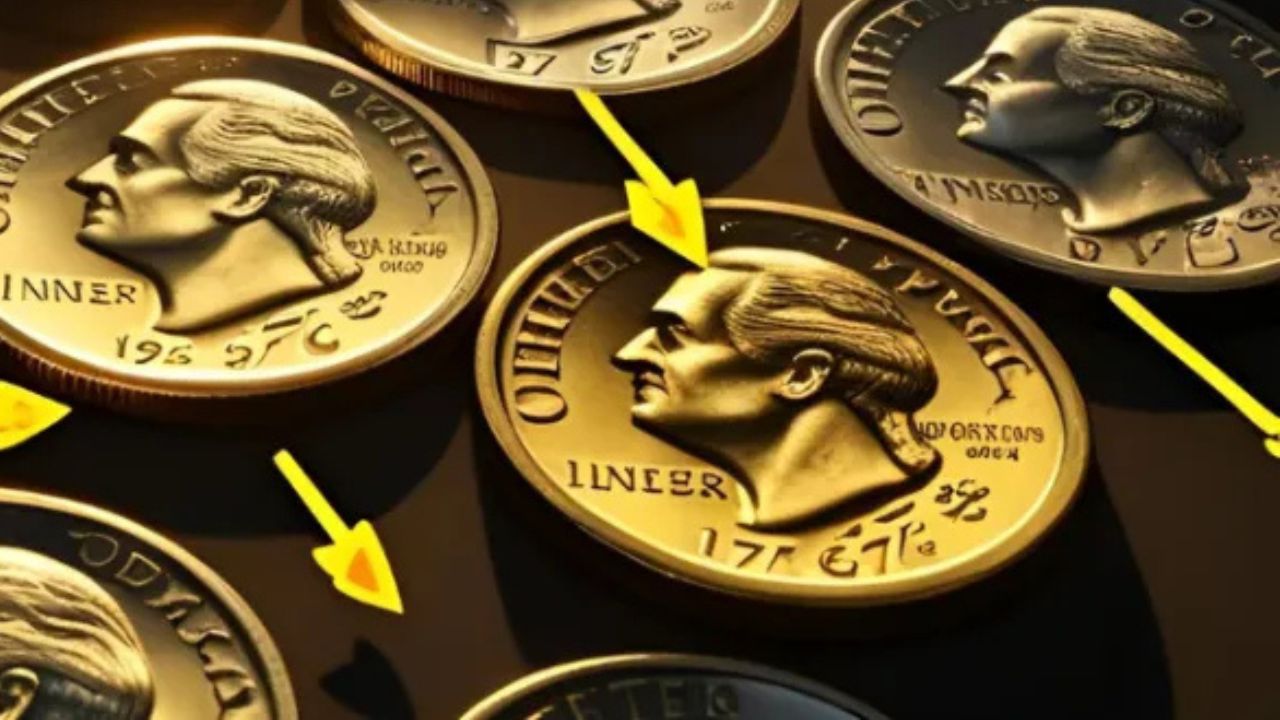Imagine checking your change jar and discovering a coin worth thousands—or even millions. While it might sound like a fantasy, it’s a reality for some lucky collectors and everyday people. Certain rare dimes and Bicentennial quarters are still in circulation today, and collectively, these valuable coins are estimated to be worth over $75 million.
What makes these coins so special isn’t just their age. Their true value lies in minting errors, low production numbers, historical context, and precious metal content. Let’s explore 8 of the rarest U.S. coins you might encounter—and how to identify them.
1. 1894-S Barber Dime – Worth Up to $2 Million
One of the most legendary coins in American numismatics, the 1894-S Barber Dime had only 24 coins minted, with fewer than 10 known to exist today. It’s an ultra-rare piece that has commanded prices upwards of $2 million at auction.
Key Features:
- “S” mintmark for San Francisco
- Extremely low mintage
- Often found in uncirculated or pristine condition
2. 1975 No-S Roosevelt Dime – Valued Around $500,000
This dime was mistakenly struck at the San Francisco Mint without its identifying mintmark. Only a few exist, making it one of the most sought-after modern mint error coins.
What to Look For:
- Proof-like finish
- No “S” mintmark above the date
- Usually part of a 1975 proof set
3. 1942/1 Mercury Dime (Overdate Error) – Worth $10,000–$50,000
This striking error occurred when a die intended for 1941 was mistakenly reused and punched with a 1942 date, creating an obvious “overdate” appearance.
How to Identify:
- Magnify the date—“1” from 1941 appears beneath the “2” in 1942
- Values soar for coins in uncirculated condition
4. 1916-D Mercury Dime – Up to $100,000 in Mint Condition
With just 264,000 minted in Denver, this is the rarest Mercury Dime in the series. It’s highly collectible, especially in high grades.
Tips to Spot:
- Look for a small “D” mintmark on the reverse
- Detailed strikes and high condition increase value significantly
5. 1976 Bicentennial Quarter (90% Silver Proof Error) – Estimated at $1 Million+
While billions of Bicentennial quarters were produced, a few were mistakenly struck using 90% silver intended for collector sets. These rare proof errors have sold for over a million dollars.
Value Factors:
- Deep cameo finish with mirror-like surfaces
- “S” mintmark and a weight of 6.25 grams
- PR70-graded coins bring top prices
6. 1968 No-S Roosevelt Dime – Auction Price: $450,000
Another mintmark error, this dime was released as a proof coin without the expected “S” from the San Francisco Mint. Extremely limited in number, this coin is a top-tier find.
What Makes It Valuable:
- Only appears in 1968 proof sets
- Missing mintmark but high-quality finish
- Graded coins from PCGS or NGC are most valuable
7. 1976-D Bicentennial Quarter with Double Die Obverse – Up to $10,000
This rare double die error causes noticeable doubling in the quarter’s text, making it one of the more affordable but still valuable coins in this list.
Look For:
- Doubling in “IN GOD WE TRUST” or “1776–1976”
- “D” mintmark under the date
8. 1976 Bicentennial Quarter Struck on Silver Dollar Planchet – Valued at $250,000+
One of the most extraordinary minting mistakes ever recorded, this Bicentennial Quarter was struck on a silver dollar planchet, giving it a different size and weight.
How to Detect:
- Larger diameter and heavier than a standard quarter
- Drummer boy reverse still intact
- Likely a one-of-a-kind coin
Why These Rare Coins Are Worth Millions
Age alone doesn’t make a coin valuable. These coins are prized because of:
- Extremely low mintage
- Minting errors and anomalies
- Use of precious metals like silver
- High-grade condition
- Historical and commemorative significance
Especially in the case of Bicentennial quarters, the blend of patriotic symbolism and production quirks has driven collector interest and skyrocketing prices.
Where to Look for Rare Coins
You don’t need to be an expert to find rare coins. Many valuable dimes and quarters have been uncovered in:
- Everyday pocket change
- Coin rolls from banks
- Estate sales or yard sales
- Old piggy banks or inherited jars
What to Do If You Find One
Think you’ve found a rare coin? Follow these important steps:
- Do not clean or polish it—this can harm its value
- Use gloves to handle and store it properly
- Get it graded by PCGS or NGC for authentication
- Consult a numismatist or trusted coin dealer
- Consider selling via major auction houses like Heritage Auctions or Stack’s Bowers
Final Thoughts
These rare dimes and Bicentennial quarters are more than just loose change—they’re pieces of American history, some born from minting accidents that turned into million-dollar marvels. With a collective value of over $75 million, they offer an exciting opportunity for anyone who takes a closer look at their spare coins.
So next time you’re counting your change, remember: the next big find could be right in your pocket.
FAQs
Q1: Are these rare coins still in circulation?
Yes, some have been found in circulation, especially through old jars, collections, and bank rolls.
Q2: How can I tell if a coin is made of silver?
Silver coins have a distinct “ring” when tapped, are heavier, and lack the copper-colored edge seen in modern clad coins.
Q3: Can I sell a rare coin online?
Yes, but get it professionally graded first for accurate valuation. Then consider selling through reputable dealers or auction platforms.
Q4: How should I store rare coins?
Use acid-free coin holders, store them in a dry environment, and avoid direct handling to preserve condition and value.
